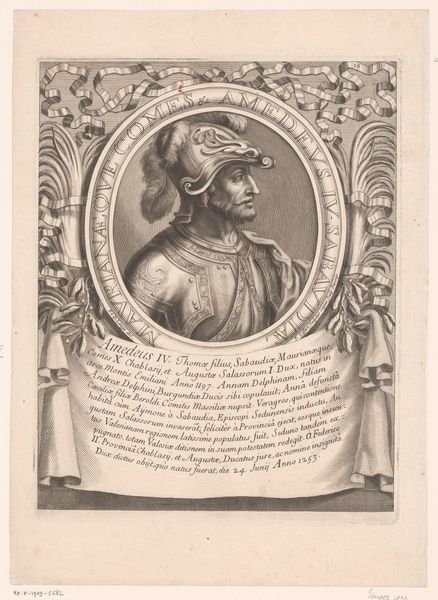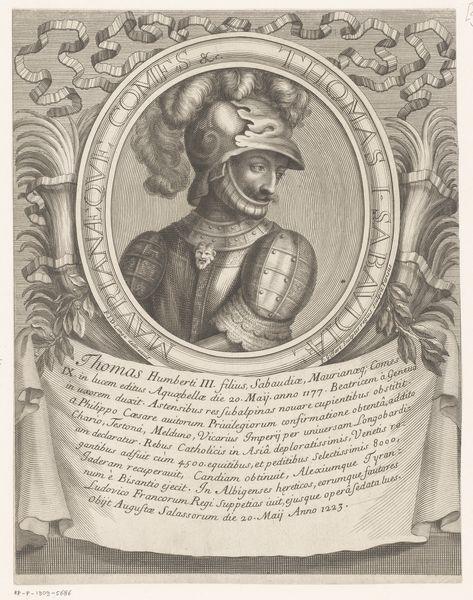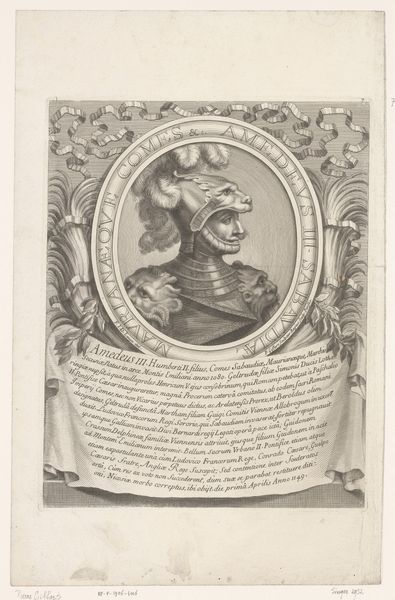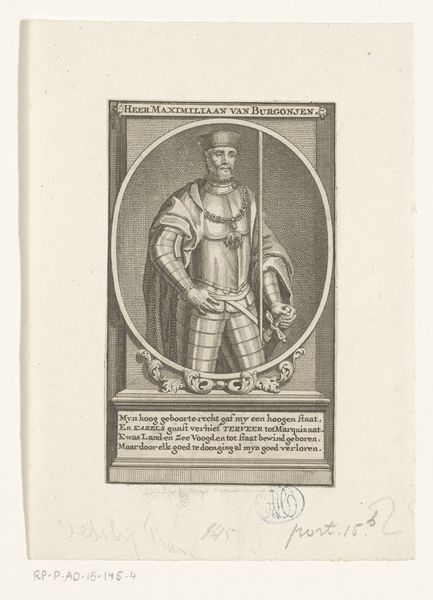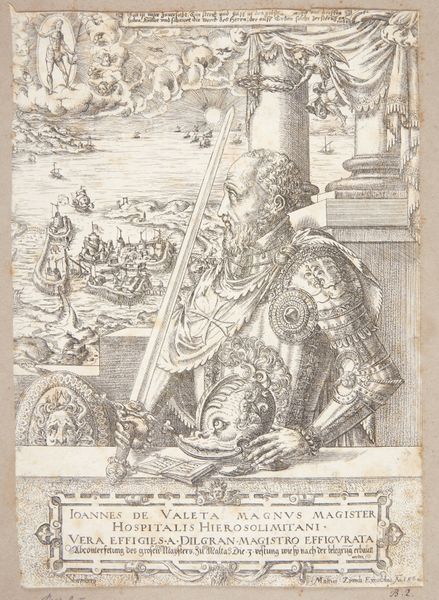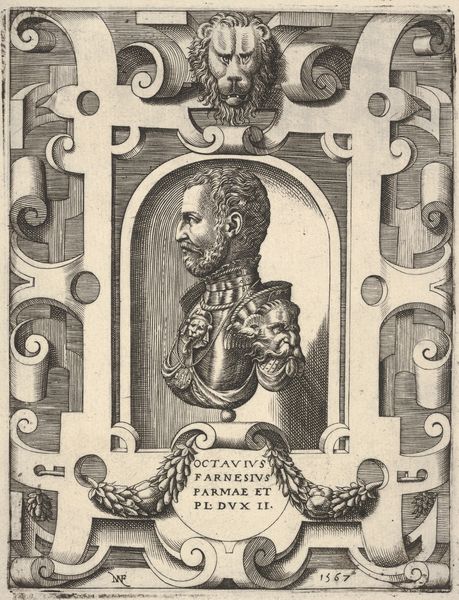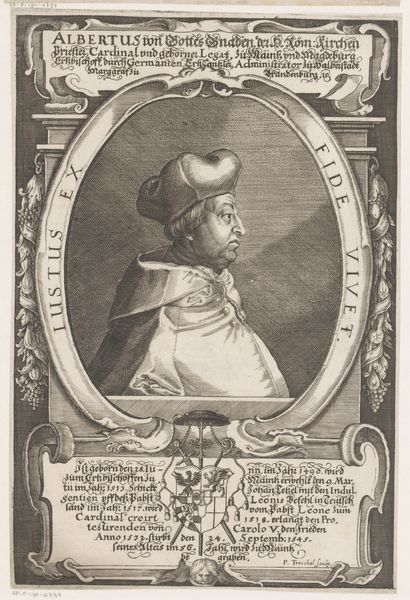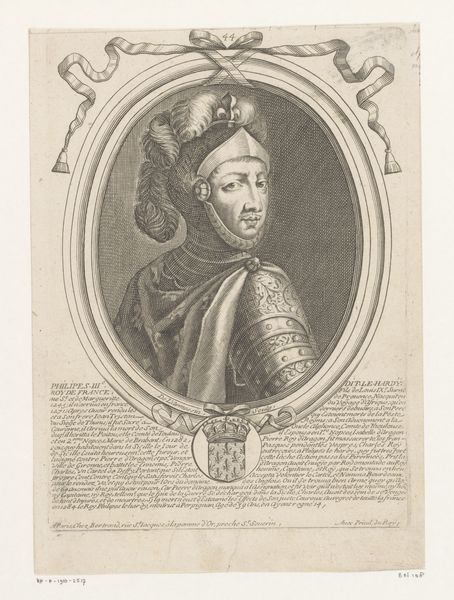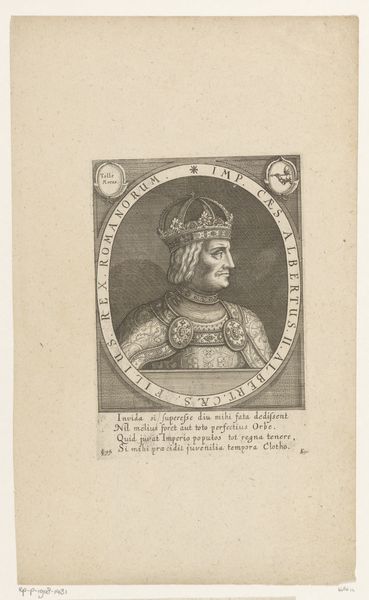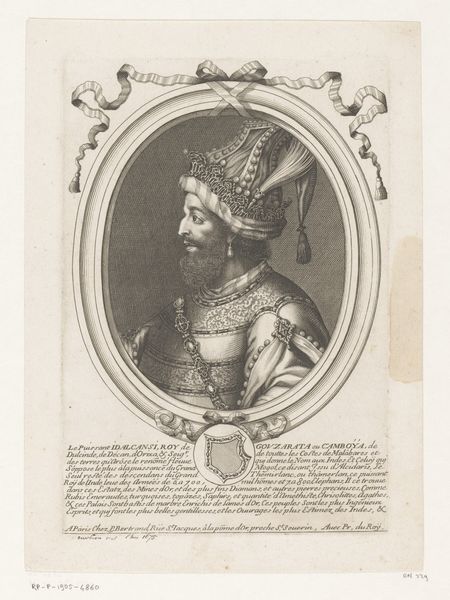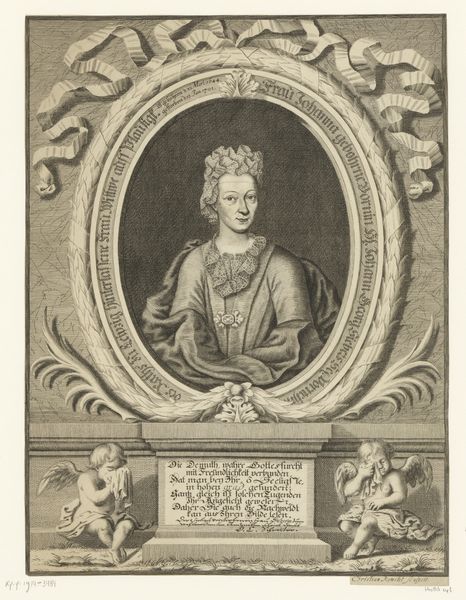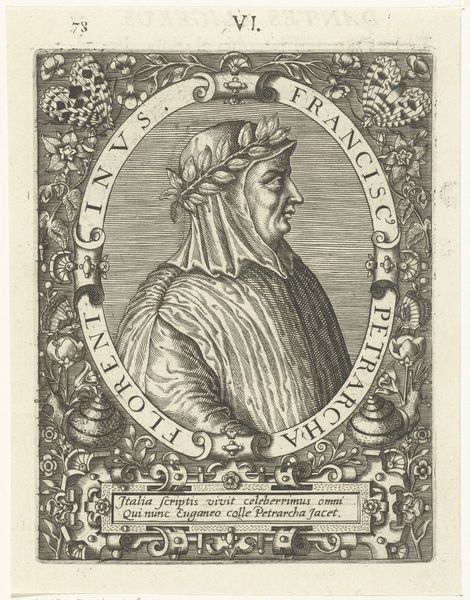
print, metal, engraving
#
portrait
#
baroque
# print
#
metal
#
old engraving style
#
line
#
engraving
Dimensions: height 279 mm, width 222 mm
Copyright: Rijks Museum: Open Domain
Curator: Here we have a portrait of Humbert II of Savoy, a print created in 1702 by Pierre François Giffart. It’s an engraving on metal, and the use of line is really striking. What are your first thoughts? Editor: The immediate impression is one of formality, even severity. The armored figure, framed within an oval and embellished with flourishes, evokes a sense of historical distance and perhaps a touch of romanticized power. It makes me think of archetypes and how we build figures of leadership. Curator: Absolutely. Let's consider the materiality here. The decision to create this portrait as a print makes it easily reproducible, allowing for wider dissemination of Humbert's image. How do you view that element of production? Editor: Indeed, prints democratize imagery to a degree, but within certain contexts: this kind of printed imagery still requires a relatively sophisticated viewer, someone connected to currents of taste and style that may spread downward through society but nonetheless remains stratified. Curator: The visual symbolism is potent. Note the text at the base, and ribbons, all framing the armored figure. Humbert is cast not just as a ruler but also a figure who fought for brigands. Does this framing shape our view of him? Editor: It definitely contributes to an idealized, heroic image. The armor itself is loaded: a symbol of military might, leadership, and perhaps the defense of Christian values, particularly if connected to holy wars or crusades of the time. The plumed helmet adds an additional layer of nobility and grandeur, evoking bravery. But let’s look closer: do you see a connection between this figure in armor, and those first engravings produced after the invention of the printing press in the fifteenth century? Curator: Interesting point! Both reflect power but within different systems of production and dissemination. Earlier prints were more closely tied to religious authority, weren't they? While later ones, such as this image of Humbert, represent the rise of monarchies and state power, which require mass communication tools to cement. Editor: Precisely. This image speaks to the deliberate construction of an image, an icon even. The goal isn't simply representation but also elevation, memory construction, cultural persuasion. The entire presentation works to create this historical impact, this lasting perception of Humbert's authority and character. Curator: Thinking about the consumption of this image, where would it have been seen? By whom? Understanding the audience helps contextualize its social role and the artist’s intention. These images, I would think, helped establish Savoy prestige. Editor: I agree. By studying the symbols employed, the craftsmanship of the engraving, and the dissemination routes, we get a more vivid understanding of this artwork as an artifact with distinct psychological and social weight. It shows us a vision of leadership but also raises questions about manipulation and power dynamics through time.
Comments
No comments
Be the first to comment and join the conversation on the ultimate creative platform.
